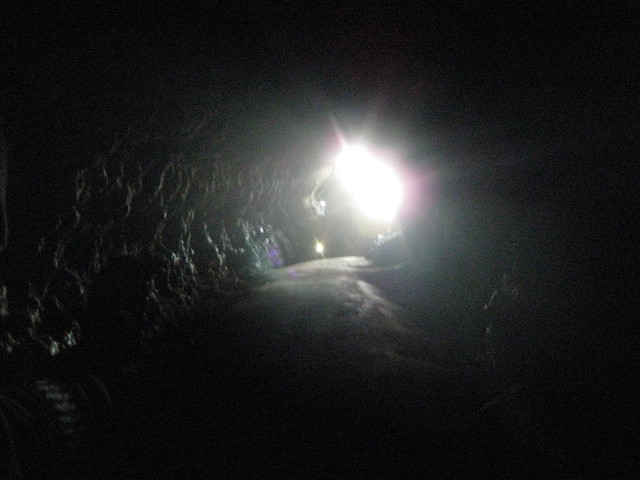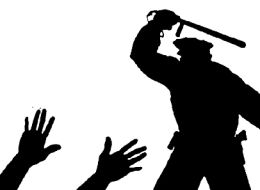I'm always interested in how we define "in control" and "conscious of our actions." The answer, ultimately, isn't what we think it is.
Predator Ariel Castro and the psychology of violence
Paul Harris in New York and Ed Pilkington in Cleveland

Ariel Castro, who appeared to be 'a happy person' according to neighbours. Photograph: Cuyahoga County Sheriff/EPA
The annals of criminal history are writ large with ordinary streets that hide dark secrets, but even so the peculiar horror believed to have been perpetrated by Ariel Castro on Seymour Avenue in the rust-belt city of Cleveland stands out.
He is accused of kidnapping three girls, keeping them captive for years in his suburban home and using them as sex slaves. The staggering joy at the rescue last week of Amanda Berry, Gina DeJesus and Michelle Knight was tempered by the revelations of what they had endured in a busy, working-class Ohio neighbourhood. No one suspected a thing.
Castro, 52, was a school-bus driver; grilled ribs with his neighbours and was a friendly soul who played in a band. "He was a very good bass player, and I'd say a happy person," said Miguel Quinones, who managed the band Grupo Fuego with whom Castro played. "There was never anything that would let you imagine anything like this."
Yet his alleged crimes are far from unique, either in America or elsewhere. There was the case of religious fanatic Brian David Mitchell who kidnapped young Mormon girl Elizabeth Smart in Salt Lake City and kept her as a "wife" for nine months. Or Phillip Garrido who kidnapped Jaycee Dugard in California in 1991 when she was 11 and kept her for almost 20 years. Or Michael Devlin who abducted the young boy Shawn Hornbeck in 2002 in Missouri and kept him prisoner for five years. Further afield, Josef Fritzl kept his daughter, Elisabeth, a prisoner and sex slave in a dungeon in his Austrian home for 24 years – all while her mother lived upstairs apparently oblivious. And Wolfgang Priklopil, also from Austria, kept Natascha Kampusch in a cellar for eight years.
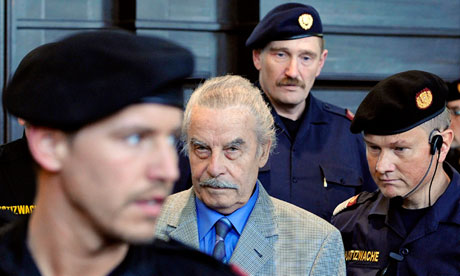 Josef Fritzl in court in Austria after he kept his daughter in a dungeon for 24 years. Photograph: Helmut Fohringer/AFP/Getty Images
Josef Fritzl in court in Austria after he kept his daughter in a dungeon for 24 years. Photograph: Helmut Fohringer/AFP/Getty Images
Those are the headline cases. But others are far from the collective memory of society, despite the appalling nature of the crimes. Few will have heard of Kenneth Parnell, who kidnapped Steven Stayner in California in 1972, when he was seven, convincing him that his family did not want him, and keeping him for seven years. Or Cameron Hooker, who kidnapped 20-year-old Colleen Stan in California in 1977, kept her locked in a box, horrifically abused her and even forced her to sign a slave contract. She endured her captivity for seven years.
Amid all that horror is one troubling theory: That we only know of the fate of these young girls and boys because men like Castro made mistakes. Their victims escaped to tell their stories. As with other criminals and other crimes, the police catch the ones who slip up. The more accomplished kidnappers are still out there, still keeping their victims alive behind some suburban facade. The idea that everyone who commits this sort of crime gets found out is not likely to be true. The opposite is probably the case: most incidents go undetected.
"I don't think there is any question there are other victims in similar situations. We are only catching the dumb ones," said Professor Sherry Hamby of the University of the South in Tennessee, and editor of the journal Psychology of Violence.
What drives them, most experts believe, is simple enough: power. To kidnap and control someone for an extended period is to exert influence over another person that few can imagine, but that these men – and they are almost always men – crave. Castro seems to fit that bill. The house where the women were kept was fitted with ropes, chains and padlocks and secure rooms. His physical domination of his captives was extreme, though as the years ticked by, they were sometimes allowed outside.
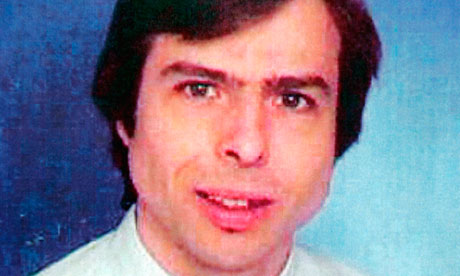
Wolfgang Priklopil, who kept Natascha Kampusch in a cellar for eight years and killed himself after she escaped. Photograph: AP
That is not always the case. Fritzl kept his daughter out of sight for many years, in effect raising her – and the children he sired with her – almost completely underground. "Controlling other people is a way of giving these perpetrators a sense of mastery over their environment," said Hamby. "It is also for them a sense of protection. They cannot be victimised themselves if they have complete control."
But, to the surprise of many, the physical ties often used in such cases of confinement are often matched in strength by the psychological ones. These men are frequently masters of brainwashing, abusing their victims psychologically so that they submit to their confinement. Castro, according to reports, would pretend to leave the house and see if his prisoners would try to leave, leaping out to catch them and beating them if they did. It taught them the dangers of escape.
Others deployed different mind tricks. Smart was told by her captor that he would kill her family if she fled. Parnell told the seven-year-old Stayner that he had been granted custody of him and his real family did not want him: something the boy eventually believed. Dugard was told by her captor of 17 years that by letting him abuse her, she would be protecting other girls from his attentions. In the even more extreme case of Stan, her captors told her that a sinister group called The Company would kill her and her family if she did not obey them. She was so obedient that she even visited her family during her time in their control.
At the heart of some of these cases is the abuse suffered by the criminals themselves. In many cases, they were sexually or physically abused as children, something that some believe can unlock the key for their actions. "They lost a sense of control as a child and they try to reclaim that sense of control with other people," said Jordan. There are clues that Castro might fit this. He apparently wrote a suicide note in 2004, that was reported by Cleveland TV station 19 Action News after it was found in his house. In it Castro apparently claimed he suffered sexual abuse at the hands of a family member and lamented: "I am a sexual predator. I need help." He also seems to recognise the immorality of what he is accused of doing. "I don't know why I kept looking for another. I already had two in my possession," he wrote.
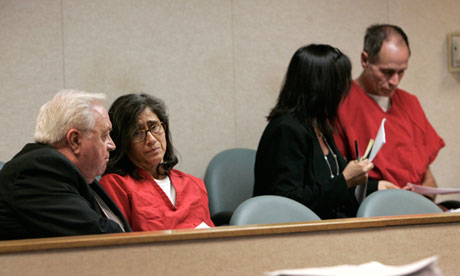
Phillip Garrido, right, and Nancy Garrido in court. Photograph: Rich Pedroncelli/AP
That sense of warped morality is frequently present. In keeping his daughter captive, Fritzl once explained that he felt he was protecting her from the world and her wild teenage years, even sometimes bringing her flowers. "I had to do something; I had to create a place where I could keep Elisabeth, by force if necessary, away from the outside world," he reportedly told his lawyer. That raises the question: are these men insane? Many think not. They often come from abusive backgrounds, they have warped senses of sexuality but many experts believe they are not mad.
"Castro is clearly in control of his faculties," said Dr Casey Jordan, a criminologist and behavioural scientist at Western Connecticut State University. Not all are. Smart's captor, Mitchell, believed that he was a prophet destined to battle the antichrist. But he was the exception. Most experts believe that these men do not suddenly become monsters. They become that way over a longer period, dealing with their demons and eventually letting them take over. It is often this appearance of normality in the rest of their lives that allows so many to get away with it for so long. "It can be a series of bad decisions. You can make just one decision that is small but takes you a little away from the rest of humanity. Pretty soon you can end up a long way from the rest of us, and suddenly it becomes easy to do something extreme," said Hamby.
And therein lies the rub. There is, for these criminals, a moment when a Rubicon is crossed. When, by force or trickery, they find themselves taking away an innocent person and forcing them into slavery and abuse. "It is like a floodgate. Once they have acted on it, there is no going back. They have plunged off the cliff," said Jordan.
OTHER KIDNAPS
Josef Fritzl
Imprisoned, beat and sexually abused his daughter, Elisabeth, in the basement of the family home in Austria for 24 years, fathering her seven children.
Wolfgang Priklopil
Abducted 10-year-old Natascha Kampusch while on her way to school in Austria in 1998, locking her in a windowless cell. He committed suicide hours after her escape in 2006.
Brian David Mitchell
The former street preacher held 14-year-old Mormon Elizabeth Smart captive for nine months in Utah, claiming afterwards that God had ordered him to do it.
Phillip Garrido
Sentenced to 431 years for kidnapping and raping Jaycee Dugard when she was 11. His wife Nancy, 55, was sentenced to 36 years in prison.




